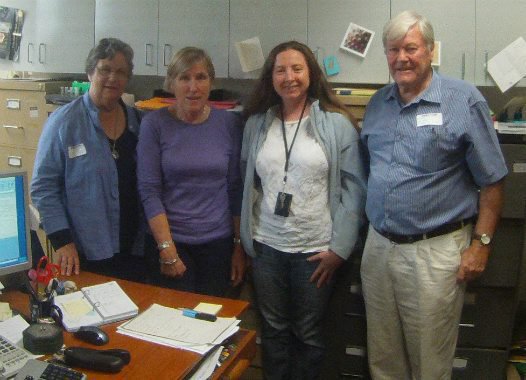South Australian Oyster Farmers Visit the Museum
The South Australian mudworm project has been developed as part of the PhD research of Lexie Walker, supervised by Dr Pat Hutchings (Australian Museum); Dr Chris Glasby (Museum and Art Gallery of the Northern Territory ) and Dr Tom Cribb (School of Biological Sciences, University of Queensland).

© Phil Lowe
A spare day in Sydney resulted in a surprise visit to the Australian Museum by South Australian oyster growers, Max and Roxanne Lowe and their son Phil, to check on the progress of the SA mudworm project. Chris Lowe, also an oyster grower and project participant, remained home in Ceduna to manage the farm.
The SA mudworm project is funded by SAORC/SAOGA ( South Australian Oyster Research Council/South Australian Oyster Growers Association) and involves a team of Australian Museum research and technical staff working with a group of SA oyster growers.
The project aims to confirm the identities of the mudworm species causing extensive infestations in SA Pacific Oyster stock and costing oyster growers millions of dollars each year. The problem is not restricted to SA and occurs in most oyster growing areas in Australia and worldwide.
Multiple lines of evidence are being used to confirm the identity of the worms including morphological examination using light and Scanning Electron Microscopy (SEM), numerical taxonomy, examination of type material from other institutions in Australia and overseas, histology (species specific staining patterns) and DNA analysis.
It's not often that industry has time to get to see research in progress, that is being conducted on its behalf. Max and family were overwhelmed by the detail involved in the research process and the associated support activities. They left with a new understanding of what museums and museum research is all about and a clear idea of how valuable their industry support is in gaining benefit for everyone involved now and also for future generations.

